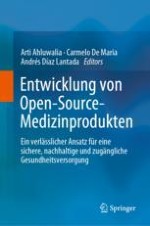2023 | OriginalPaper | Buchkapitel
7. Gesetzgebung für Open-Source-Medizinprodukte: Aktuelles Szenario, Risiken und Möglichkeiten
verfasst von : Maria Elena Lippi, Filippo Morello, Licia Di Pietro, Carmelo De Maria, Valentina Calderai
Erschienen in: Entwicklung von Open-Source-Medizinprodukten
Aktivieren Sie unsere intelligente Suche, um passende Fachinhalte oder Patente zu finden.
Wählen Sie Textabschnitte aus um mit Künstlicher Intelligenz passenden Patente zu finden. powered by
Markieren Sie Textabschnitte, um KI-gestützt weitere passende Inhalte zu finden. powered by
